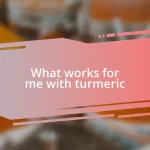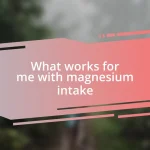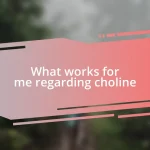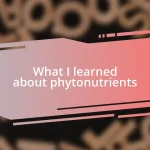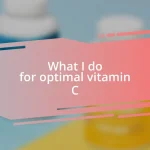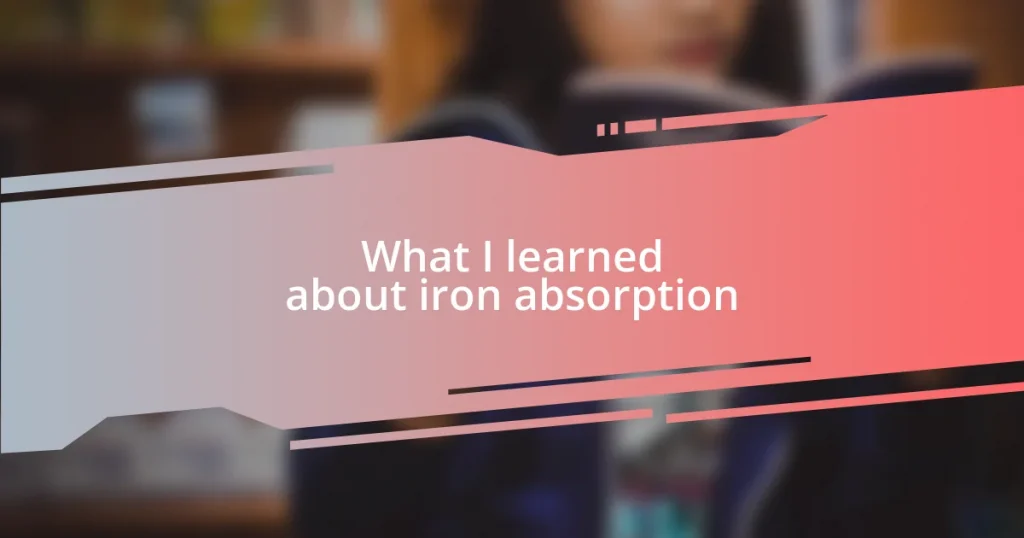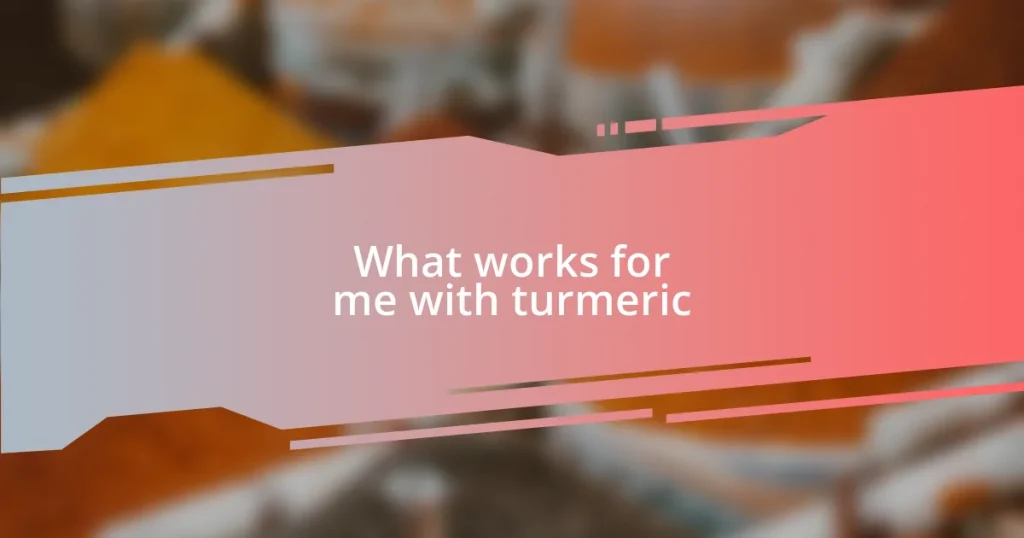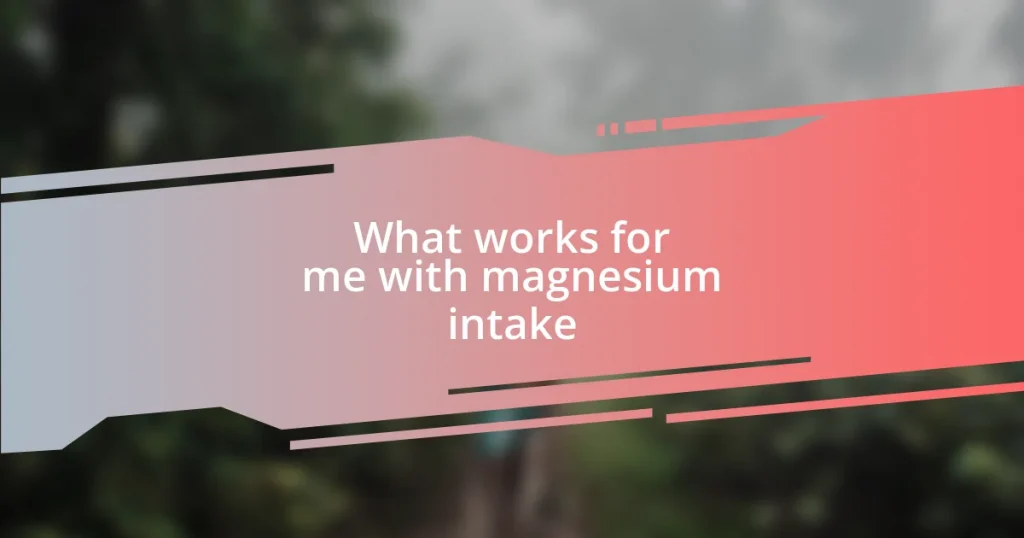Key takeaways:
- Heme iron from animal sources is absorbed more efficiently than non-heme iron from plants, highlighting the importance of food source selection.
- Vitamin C enhances iron absorption, while calcium and tannins (found in tea and coffee) inhibit it; meal pairing is crucial for optimizing nutrient uptake.
- Signs of iron deficiency include fatigue, paleness, and dizziness; adjustments in diet and cooking methods, like using cast iron pans, can significantly improve iron levels.
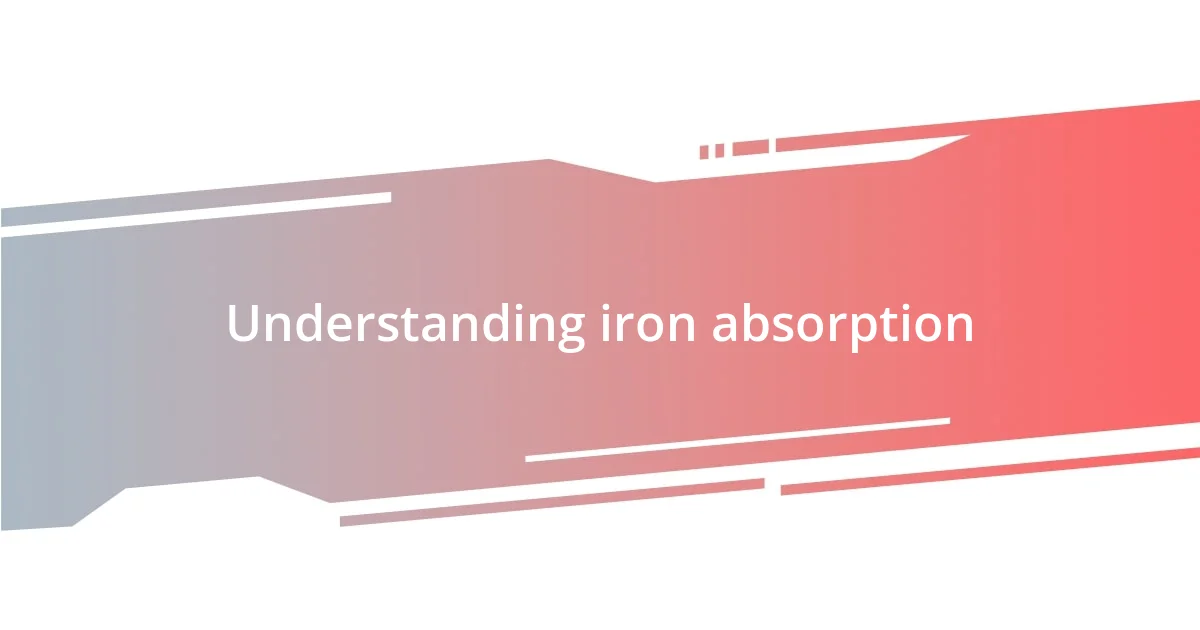
Understanding iron absorption
Iron absorption can be a surprisingly complicated process, influenced by various factors such as diet and even individual physiology. I remember when I was puzzled by how my iron levels fluctuated despite eating plenty of spinach, which is often heralded as a super iron source. It turned out that the body can only absorb certain forms of iron—heme, found in animal products, is far more efficiently absorbed than non-heme iron, which is present in plant foods. Isn’t it interesting how what we eat isn’t fully effective just because of the source?
Think about it—vitamin C can enhance iron absorption significantly. I once paired a meal rich in iron with a side of citrus fruits and was amazed at how much better I felt afterward. It’s like a little secret weapon. Why would you want to overlook such a simple, effective strategy? This interplay of nutrients is something I wish I had understood sooner, as it’s not just about getting enough iron; it’s about getting it in a form that’s usable by our bodies.
Moreover, certain factors can inhibit iron absorption, like tannins in tea or calcium from dairy. Years ago, I had a habit of enjoying a cup of black tea after meals, thinking it was just a nice way to unwind. Little did I know, I could be hindering my body’s ability to absorb the iron from my food! Recognizing these small choices can make a significant difference in nutrient uptake over time. It’s a reminder that everything we consume interacts in ways we might not always be aware of.
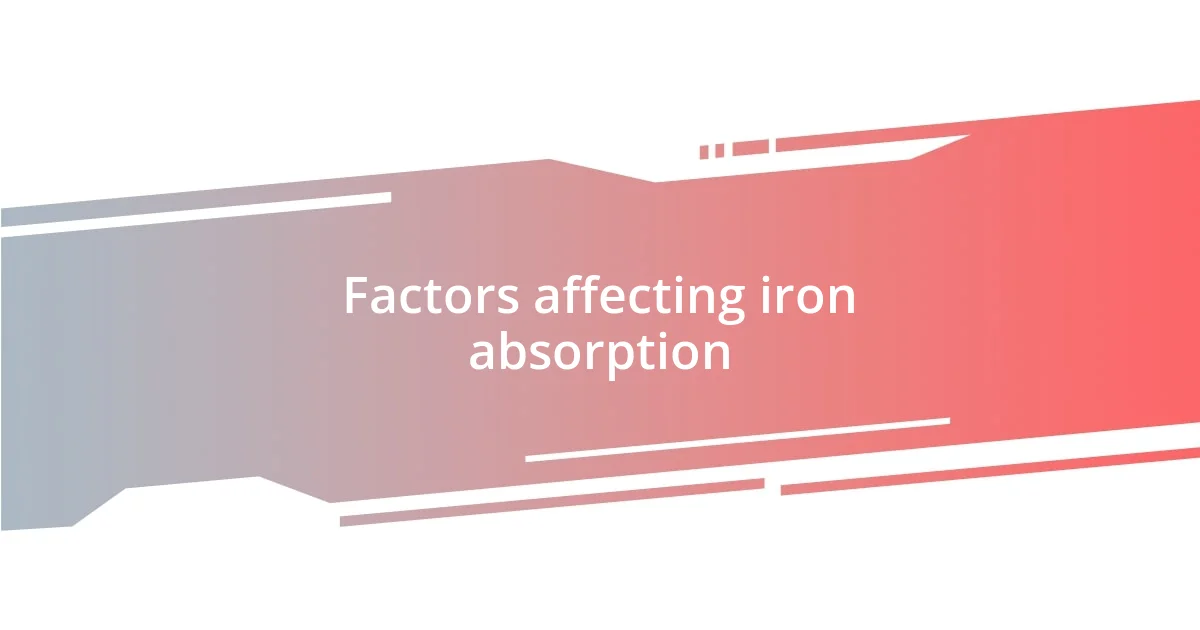
Factors affecting iron absorption
The type of iron we consume plays a crucial role in how much our bodies can absorb. I learned this the hard way when I went vegetarian and noticed my energy dipping despite loading up on plant-based foods. It became clear that my iron sources were primarily non-heme, making it harder for my body to extract what it needed. Understanding this shift was enlightening—it highlighted the importance of not just what I eat, but how my body interacts with those nutrients.
Another factor that I found quite fascinating is the role of meals in iron absorption. For instance, when I combined my iron-rich foods with dairy, I noticed a change in how my body reacted during workouts. Feeling sluggish after a plate of spinach with cheese made me realize that calcium competes with iron for absorption. I started experimenting with meal combinations, allowing me to reclaim my energy and better support my active lifestyle.
Lastly, don’t overlook the impact of phytates, found in whole grains and legumes. At one point, I embraced a high-fiber diet loaded with these foods, but my iron levels told a different story. Learning about how phytates bind with iron and inhibit its absorption made me cautious about my choices. Shifting my focus on preparation methods, like soaking legumes, made a significant difference in my iron intake and overall wellness.
| Factor | Impact on Iron Absorption |
|---|---|
| Type of Iron | Heme iron (animal-based) is better absorbed than non-heme (plant-based). |
| Food Pairing | Vitamin C enhances absorption, while calcium inhibits it. |
| Presence of Phytates | Found in grains and legumes, phytates can decrease iron absorption. |
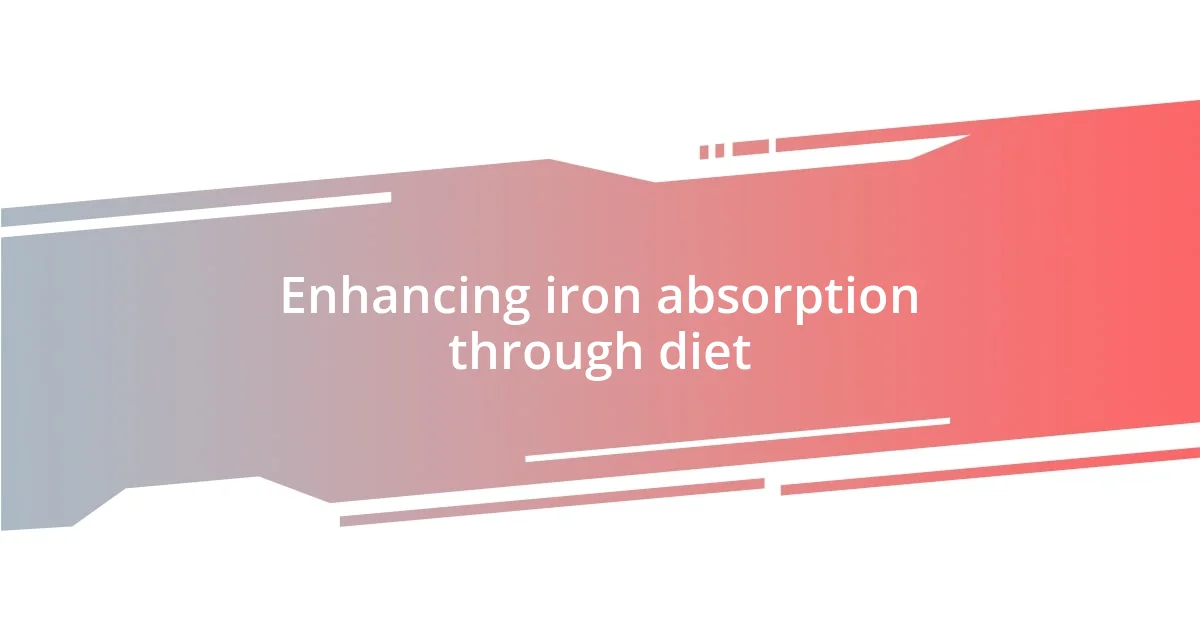
Enhancing iron absorption through diet
Enhancing iron absorption through diet is all about making smart choices that work in our favor. I often reflect on that moment I discovered the power of pairing foods. I was having a bowl of oatmeal, rich in iron, but it wasn’t until I added some strawberries on top that I realized how much that decision could elevate my iron levels. It was truly eye-opening to see how simply adjusting what I ate together could improve how I felt overall.
To really boost your iron absorption, consider these tips:
- Pair with Vitamin C: Include citrus fruits, bell peppers, or tomatoes alongside iron-rich foods.
- Timing Matters: Avoid dairy and tea during meals; instead, save those for later to prevent calcium and tannins from hindering absorption.
- Choose Cooking Methods Wisely: Cooking with cast iron pots can add a bit of extra iron to your meals.
- Experiment with Soaking: Soaking grains and legumes can reduce phytate levels, enhancing iron availability.
Making these small, mindful changes in my diet was a game-changer, and I encourage anyone striving for better iron status to do the same. It’s amazing how just a bit of knowledge can transform our relationship with food!
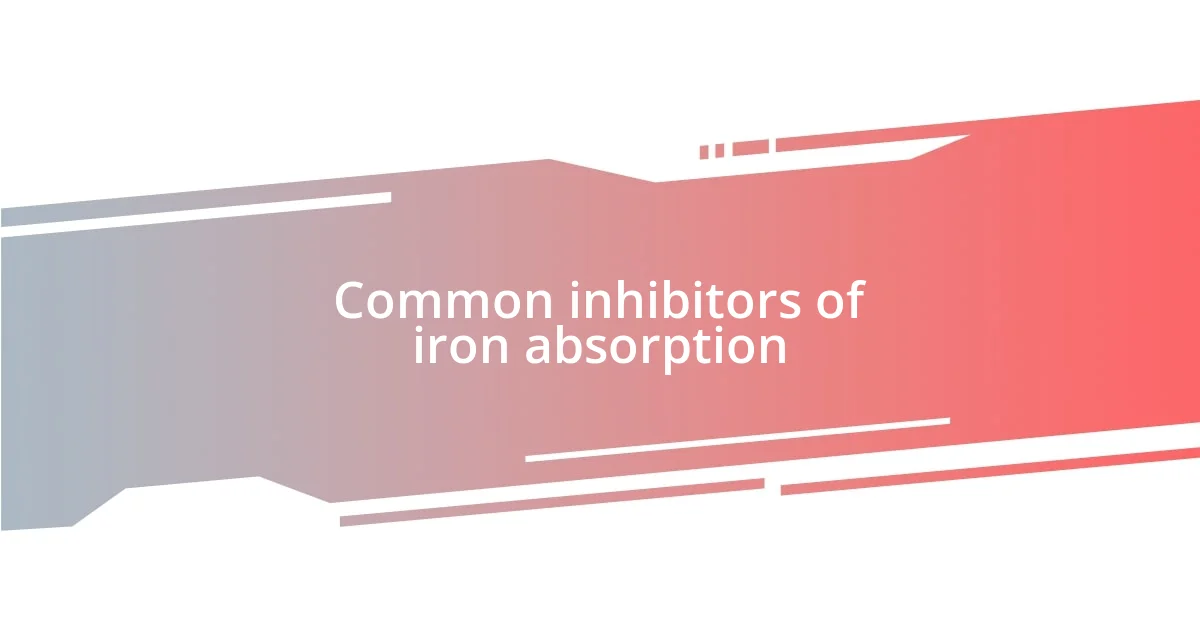
Common inhibitors of iron absorption
There are several common inhibitors that can significantly impact our body’s ability to absorb iron. One that I’ve noticed in my own experience is the consumption of tea or coffee during meals. I used to enjoy a cup of green tea with my dinner, thinking it was a healthy choice. However, I later learned that the tannins present in these drinks can bind with iron, making it harder for the body to absorb this critical nutrient. Once I switched to having these beverages between meals, my overall energy levels improved significantly.
Calcium is another often-overlooked barrier to iron absorption. I vividly recall an afternoon when I enjoyed a delicious spinach salad topped with feta cheese, thinking I was doing my body a favor. It was a pleasant surprise when I discovered later that the calcium from the cheese was competing with the iron in the spinach. This revelation made me more discerning about my meal pairings. I began to wonder: how many times had I unknowingly sabotaged my nutrient intake by combining iron-rich food with dairy? Being more mindful really transformed my approach to meals.
Phytates, found in various plant foods, also present a challenge. I remember when I relied heavily on whole grains for my meals, feeling proud of my healthy choices. Yet, despite my best intentions, my iron levels told a different story. Realizing that these compounds could hinder absorption was an eye-opener. I started soaking my grains and legumes, an easy step that seemed to breathe new life into my iron intake. Had I known this sooner, I could have avoided some of that unnecessary fatigue! It’s amazing how a small adjustment can make such a significant difference in our health.
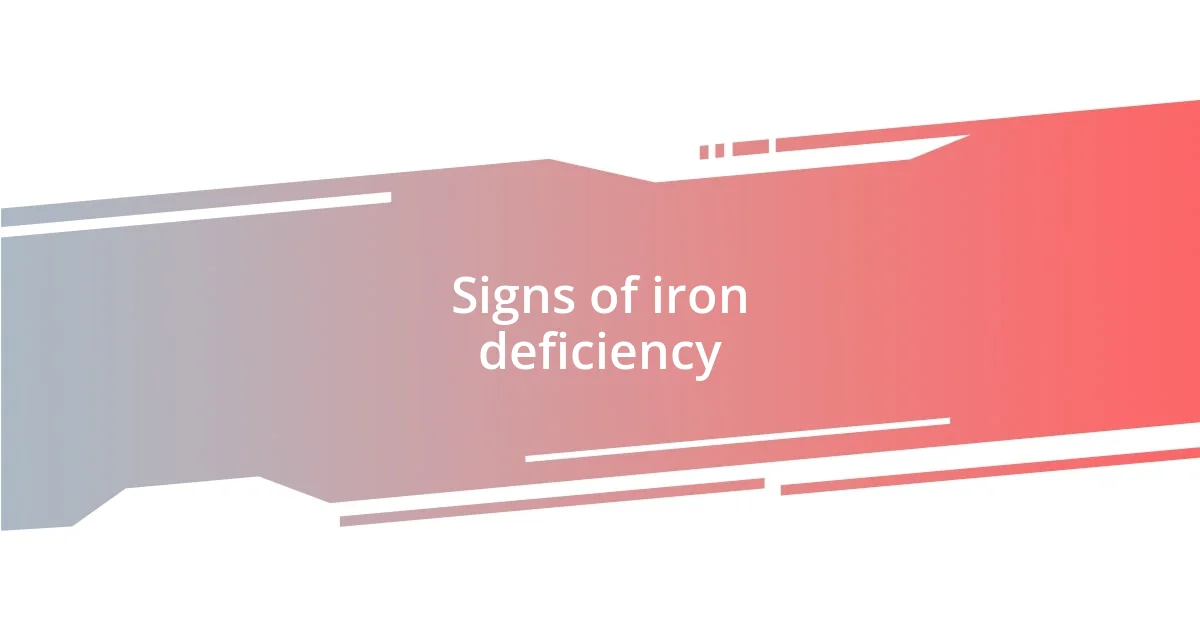
Signs of iron deficiency
Experiencing fatigue and weakness often made me pause and reflect on my health, and one day I realized it might be related to iron deficiency. I remember feeling unusually tired after a busy week, which led me to further investigate my dietary choices. Dullness in my energy levels and a persistent sense of exhaustion served as red flags that prompted me to look deeper into my iron intake.
Another telling sign of iron deficiency I noticed was the pale appearance of my skin, which contrasted starkly with my usual complexion. Friends would compliment my ‘glow,’ but I couldn’t shake the feeling that something wasn’t right. It really hit home when I discovered that paleness can indicate reduced hemoglobin levels—the protein that carries oxygen in the blood. This realization made me understand how visual cues often reflect what’s going on inside our bodies.
Then there were the moments of constant headaches and dizziness, particularly when standing up quickly. I would often think, “Am I just dehydrated?” But as I learned more about iron deficiency, it dawned on me that these symptoms could be linked to low iron levels as well. Connecting the dots between my experiences and the symptoms helped me recognize the importance of monitoring my iron status and ensuring I was taking care of my body properly. Isn’t it interesting how our bodies send us signals, often wrapped in everyday experiences?
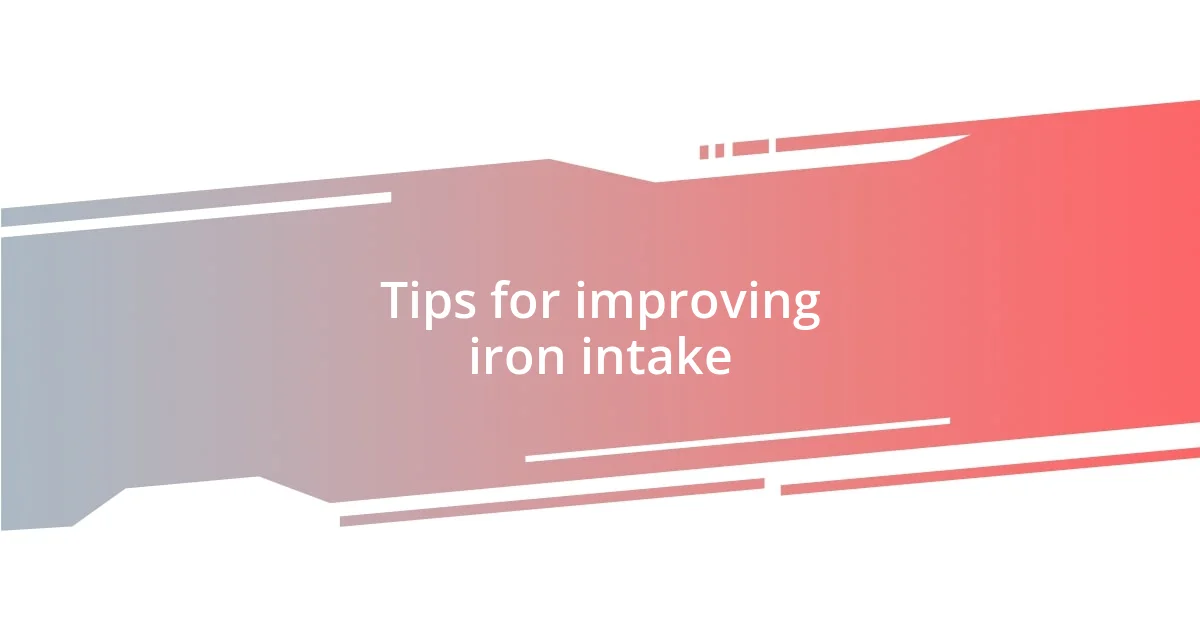
Tips for improving iron intake
When it comes to boosting iron intake, I’ve found that incorporating vitamin C-rich foods into meals can really enhance absorption. I remember a time when I had a lovely spinach and chickpea salad, and I tossed in some vibrant cherry tomatoes. The tangy burst of flavor wasn’t just delicious; it made me feel good knowing I was helping my body absorb more iron from the spinach. Have you ever thought about how a simple squeeze of lemon can elevate not just the taste of a dish but its nutritional value as well?
Another strategy I’ve adopted is to diversify the sources of iron in my diet. I used to rely heavily on a few staple foods, mainly red meat, but when I started integrating more plant-based sources like lentils and quinoa, I realized my meals became even more interesting. Plus, I discovered that iron from plant sources, known as non-heme iron, needs a little extra boost from other nutrients, so mixing in those vitamin C champions really made a difference. It’s like forming a culinary team where each player contributes to a win!
Lastly, cooking with cast iron pans has been a game changer for me. I can still recall the surprise I had when my friend pointed out that using these pots could actually increase the iron content in my meals. After trying this out myself, I noticed a slight improvement in my iron levels, and it felt satisfying to know I was boosting my intake without drastically changing my diet. Have you explored the idea of how the tools you use in the kitchen can impact your nutrition? It’s a fascinating aspect that deserves a little more attention!
